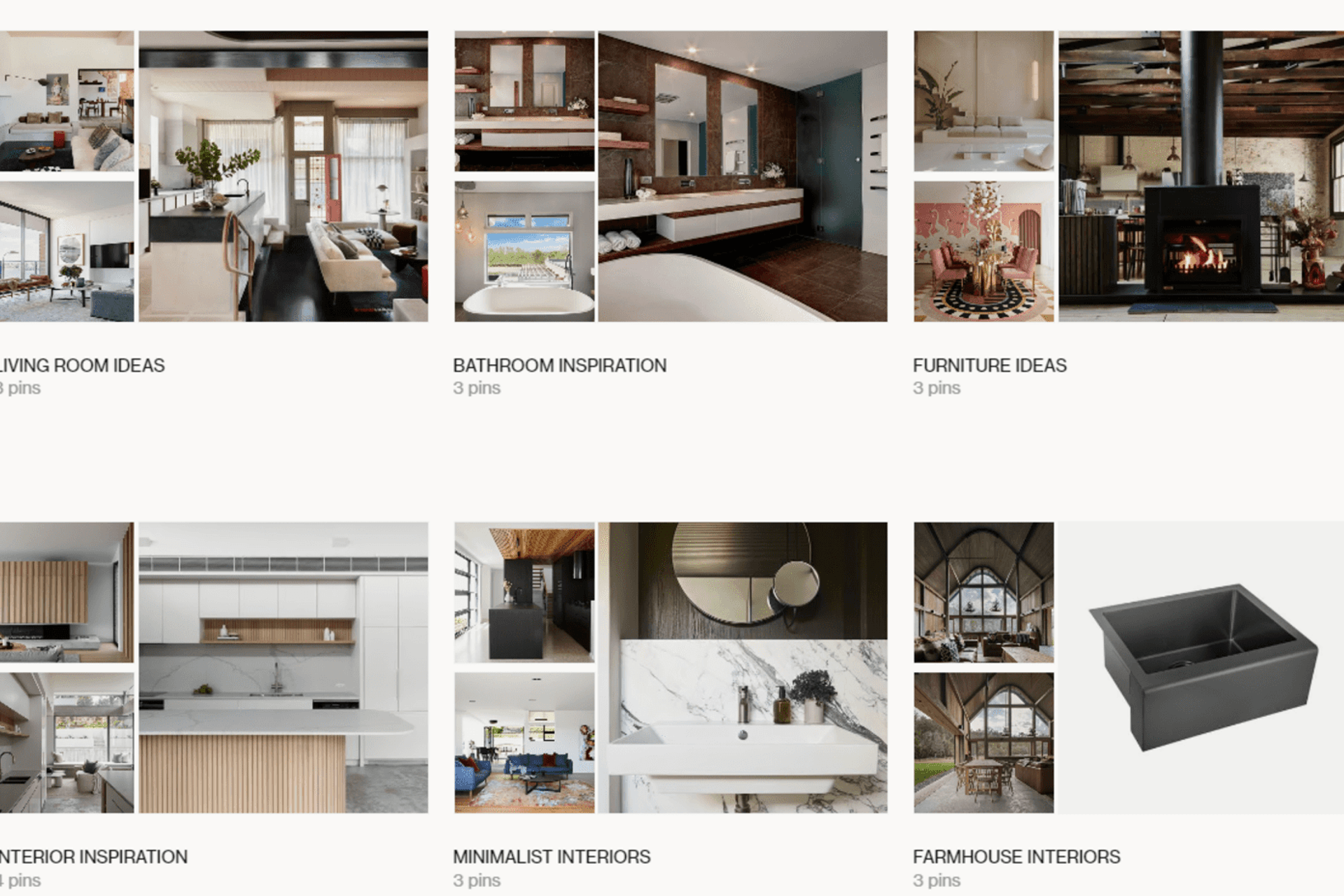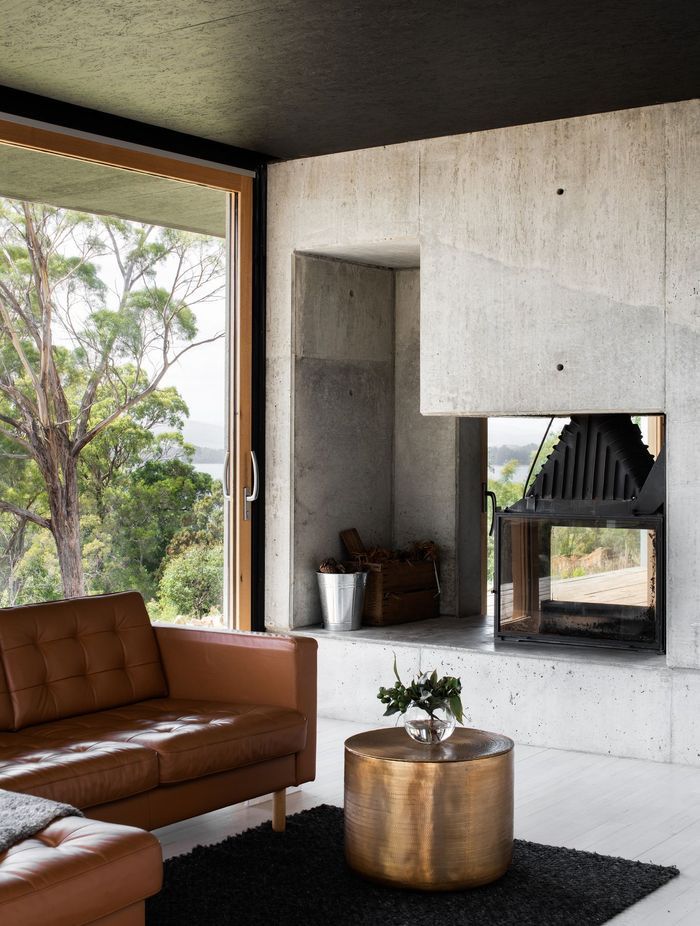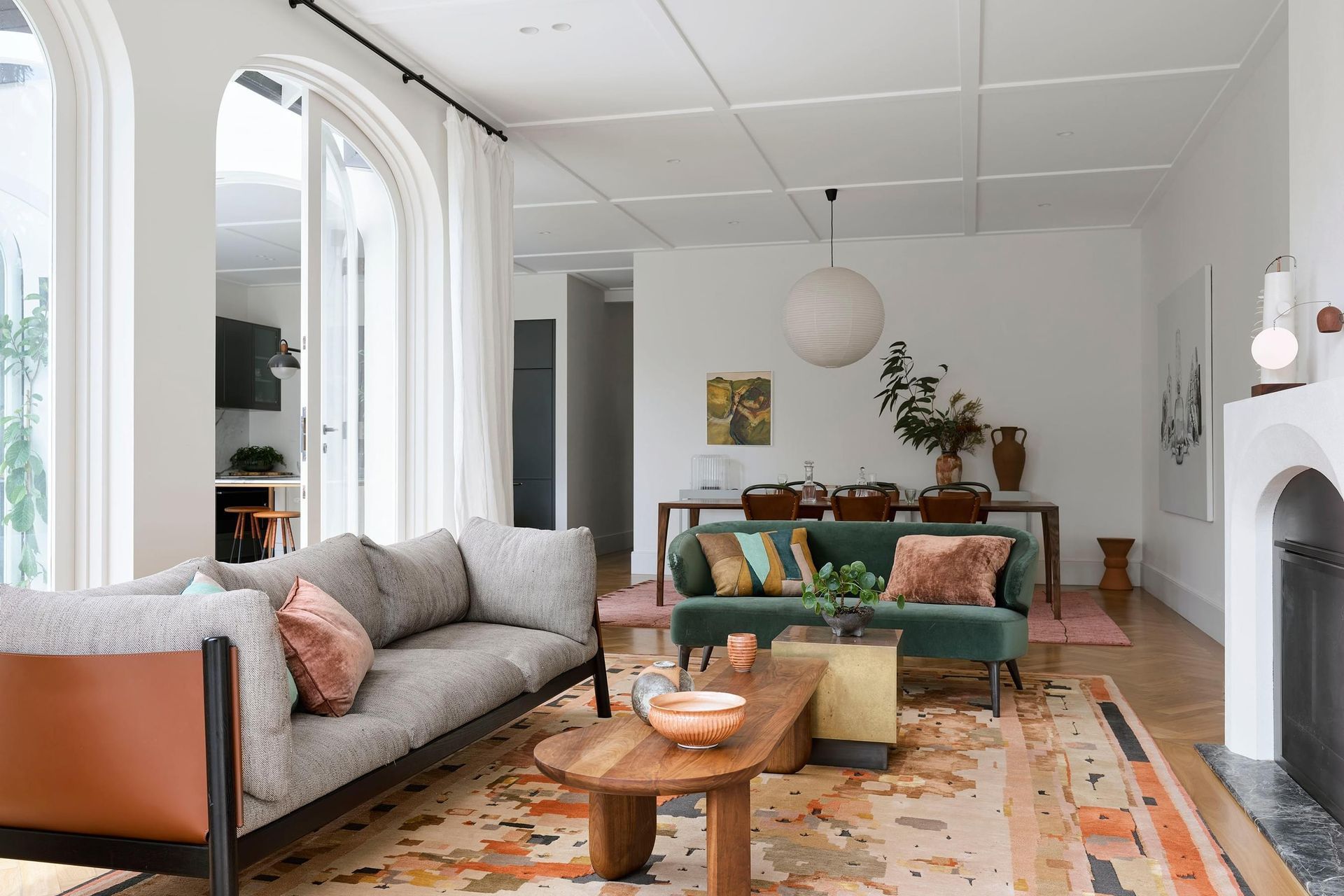Crafting your perfect space: Selecting an interior design style that suits you

To help you decide, we've put together straightforward, practical advice to simplify your decision-making process, making it easier for you to create a home that is a true reflection of yourself.
Step One: Assess your needs
The first step is to think about each room you'll be implementing your desired interior design style in and to think about what you want each room to reflect and be used for. Consider the activities that will occur in each space and how the design can accommodate those needs. For instance, a living room may need to feel relaxing and be suitable for entertaining guests, while a home office should promote focus and productivity.
If, for example, you have a lively and social lifestyle, you might want a living room that is open and welcoming, possibly with a Modern or Bohemian style. If you enjoy cooking and often have family meals, a kitchen with a warm and homely style Country or Rustic style can be suitable.
Or for families with young children, a playroom might be crucial, reflecting a fun and engaging style, possibly with a Scandinavian influence for its focus on simplicity and functionality. Families might also prefer a kitchen that is open and inviting with a Traditional or Modern Farmhouse style, focusing on comfort and accessibility.
Step Two: Examine your style preferences
The next step is to reflect on your preferences and dislikes. This can involve considering colours, shapes, and textures you are drawn to. Are there certain colours, shapes, or textures that you find appealing or unappealing? For example, if you notice that you feel more relaxed and happy in rooms with soft blues and greens and less clutter, jot these preferences down.
You can also look around at your current furnishings and decorations. Which items do you love, and which ones are you not fond of? For instance, if you have a rug or a piece of art you adore, consider why you like it. Is it the colour, the texture, the pattern, or the style? Understanding what you like is crucial in finding a style that feels right for you and makes your space feel like home.
Step Three: Explore and research different interior design styles
Gaining some insights into different popular interior design styles is an important part of selecting one you align with. If you’re starting your research entirely from scratch, you can start by allocating some time each day to look at different styles. You can use online resources or magazines to see how each style is implemented in different spaces. Take particular note of the kind of furnishings, colour palettes, and décor used. For instance, if exploring Minimalism, look for rooms with a limited colour palette and few simple furnishings and decorations.
Another tip is to make a list or a quick sketch of elements you like in each style. Are you drawn to the cosy and homey vibe of the Modern Farmhouse, or do you prefer the simplicity and clarity of Minimalism? You can also note down what you don’t like about each style as well.
For a hands-on approach, you can even rearrange your existing furniture or decorations or create a rough layout on paper or a digital app to mimic the style you are exploring that day. See how it feels. Does it suit your daily routines and the way you use your space? Can you imagine the whole room being centred around this style? The more practical research you can do, the more likely you’ll make well-informed stylistic choices.
Step Four: Create an inspiration board for your style ideas
An essential step in uncovering your interior design style is to create a visual representation of what appeals to you. You can begin by gathering images of rooms, decor, and furniture that attract you. If you find yourself leaning towards certain fabrics or materials, gather samples or swatches. By actively collecting images, fabric swatches, and colour samples, you may begin to see commonalities and patterns in your choices, such as a preference for a specific colour palette, material, or type of furniture.
For instance, you might notice a recurrence of natural materials and green colours on your board, indicating a preference for a more organic and nature-inspired style. Or, perhaps you find a variety of geometric shapes and vibrant colours, suggesting an inclination towards a more eclectic and bold style.
ArchiPro users can create their own design boards, saving and adding images from any product or project found on the site. Better still, it's completely free to sign up to access this great feature!

Step Five: Start thinking about your budget
It’s pivotal to allocate a sensible budget when deciding on an interior design style, as it affects which styles are within reach. Let’s say you’re drawn to a luxurious or opulent style. Certain materials and pieces synonymous with this style, like marble countertops or silk drapes, can be costly. By outlining what you can spend, you might realise this style is out of reach, or you may opt for look-alikes or fewer luxurious pieces to stay within budget.
If you’ve got a clear budget from the start, you can immediately focus on styles and elements that fit within it, avoiding wasted time on unattainable options. This way, you can realistically assess styles and make conscious decisions, avoiding overspending while accomplishing a look that reflects your tastes.
Step Six: Think about the existing architecture in your home
The existing architectural features in your home can have an impact on your design choices, and its an important step to carry out. Start by examining the structural features and materials of your home. Are there exposed beams, brick walls, large windows, or intricate mouldings? For instance, if your home has a lot of wooden elements, you might want to explore styles that incorporate wood prominently, such as a Rustic or Scandinavian style.
You can also take pictures of architectural features in your home and compare them with the design styles you're considering. To start, find a user-friendly design app online. Some are free or offer trial periods. Once you have the app, upload photos of your rooms. Then, explore the styles you are considering, one at a time, to see how they fit with your home's features. This is a great, cost-effective way to see how different interior design styles mesh with your home before making a final choice.
Step Seven: Factor in your homes location and natural surroundings
When settling on an interior design style incorporating the unique characteristics of your natural surroundings and environment is another factor to consider. Australia’s diverse landscapes and climates call for a thoughtful approach to design.
For a beachside residence in Queensland, a Coastal or Tropical style would be fitting. This style accentuates light, airy spaces and utilises materials such as timber or rattan, reflecting the easy-going and soothing seaside ambience.
In metropolitan cities like Melbourne or Sydney, a Modern or Industrial style might resonate well, emphasising sleek lines, minimalist aesthetics, and the innovative use of materials like metal and glass. Given the urban landscape and the availability of modern amenities, such styles can create a sense of coherence with the cityscape and allow for a sophisticated and contemporary living experience.
For a home in the Victorian bushland, an Organic or Rustic style would be more appropriate. This style blends elements like stone and wood and employs colours and textures that align with the indigenous flora and fauna, allowing the dwelling to blend seamlessly with its natural environment.
Step Eight: Plan your space accordingly
Even if you’re still undecided on the exact interior design style you’re going for, having an effective plan for your space is important. You can start this process by getting acquainted with the specific characteristics and constraints of the room. Evaluate the dimensions, note the placement of doors, windows, and any built-in elements, and consider how these will interact with any new elements you’re introducing.
If you have the resources, you can also consider creating a floor plan, be it a simple sketch or a detailed app-generated layout. A floor plan will help you visualise how the room will look and- help you allocate space accordingly. You can also experiment with different placements for your furniture at this stage and different room layouts - the planning phase is the perfect opportunity to get clarity on what you like about your existing space and what you want to change.
Step Nine: Make the decision to go it alone or seek the help of a professional interior designer
The final decision you'll have to make is whether to choose and implement an interior design style yourself or seek out the assistance of a professional interior designer. There's no right or wrong decision to make here just different factors to consider.
Choosing an interior design style yourself is indeed a path filled with personal explorations and discoveries. It allows you to infuse your space with your personality and preferences fully, making your home truly your own. You can be flexible with your choices, tweaking and adjusting as you go, ensuring each element fits your taste. Additionally, this approach is often more budget-friendly as it eliminates professional fees.
However, this route also comes with challenges. The abundance of styles and choices available can lead to decision paralysis, making the process more stressful than it needs to been. There’s a risk of styles clashing, leading to a lack of cohesion in the overall design. If you end up unsatisfied with the result, modifying it can incur additional costs and time.
Opting for a professional interior designer can alleviate the challenges inherent in the DIY approach. A designer brings expertise and experience to the table, providing insights and suggestions that might not have occurred to you. For instance, if you share images, and elements you like with a designer, they can identify common themes, patterns, and characteristics to help define a style that suits you. They may also provide guidance on how to blend different styles cohesively, ensuring that the end result is harmonious and reflects your personality.
Final thoughts
Selecting the right interior design style requires a balance of visual/stylistic appeal and practical necessities, integrating elements that are not only pleasing on the eye but also align well with the existing architecture and surroundings. Whether you decide to undertake this journey independently or seek professional guidance, thoughtful consideration of each aspect ensures that the chosen style will genuinely resonate with you, improving your day-to-day experiences in your home.









